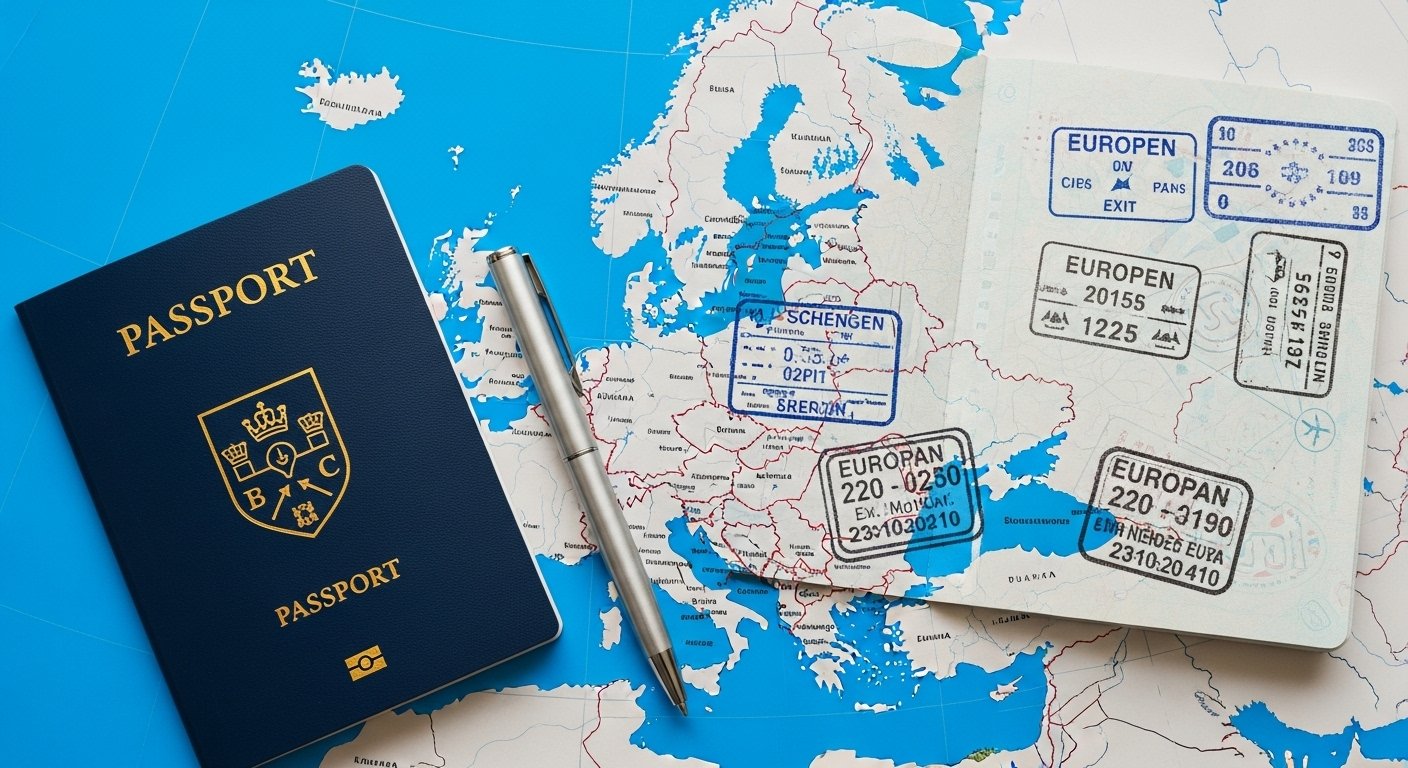For any non-European digital nomad dreaming of a life on the continent, one phrase inspires more confusion and anxiety than any other: the "90/180 Day Rule." It feels like a complex legal puzzle, and the fear of getting it wrong can be paralyzing.
But it doesn't have to be.
The Schengen rule is simply a system, and like any system, it can be understood and managed with the right strategy. From my time studying in Italy to my Erasmus semester in Poland, I've had to master navigating these rules. This is our definitive Schengen Zone guide for nomads, designed to turn that confusion into confidence.
What Exactly is the Schengen Area?
First, the basics. The Schengen Area is a collection of 27 European countries that have abolished their internal borders, allowing for the free and unrestricted movement of people. For a traveler, this means you can take a train from Lisbon to Berlin without ever showing your passport.
It's crucial to remember that the Schengen Area is not the same as the European Union. Some EU countries (like Ireland and Romania) are not in Schengen, and some non-EU countries (like Switzerland and Norway) are.

The 90/180 Day Rule: Explained Simply
Here is the rule itself: As a visitor from a visa-waiver country (like the US, Canada, Australia, etc.), you are allowed to stay in the entire Schengen Area for a maximum of 90 days within any 180-day period.
The confusing part is the "any 180-day period." It's not a fixed block of time.
The Best Analogy: A Rolling Visa Budget Think of it like this: on any given day, you can look back over the last 180 days. The total number of days you have spent inside the Schengen Zone during that window cannot exceed 90.
Example: You spend all of January, February, and March (approx. 90 days) in Spain. You then must leave the Schengen Area. You cannot simply re-enter on day 91. The 180-day "look-back" window is now full. You would need to wait for your earliest days to "fall out" of that 180-day window before you can re-enter.
How to Calculate Your Days (The Non-Negotiable Step)
Manually calculating your days is a recipe for disaster. You must use an official or trusted online Schengen calculator. It is your responsibility to track your days accurately.
Open a Schengen calculator.
Enter all your past and planned entry and exit dates.
The calculator will tell you exactly how many of your 90 days you have used and when you are eligible to re-enter.
Common Mistakes: A Quick Schengen Zone Guide for Nomads
This section provides a brief Schengen Zone guide for nomads on common pitfalls to avoid.
Forgetting Non-EU Countries: Remember, Switzerland, Norway, Iceland, and Liechtenstein are in Schengen. Your time there counts towards your 90-day limit.
Confusing it with the EU: Time spent in EU countries outside of Schengen (like Ireland or Romania) does not count towards your 90-day limit. Many nomads use these countries to "wait out" their time before they can re-enter the Schengen Area.
Miscalculating the 180-Day Window: It is a rolling window, not a fixed six-month block. Always use a calculator.
What Happens If You Overstay?
Don't do it. The consequences of overstaying can be serious and are not worth the risk. They can range from a simple warning or a fine to, in more serious cases, deportation and an entry ban for several years.
The Solution for Long-Term Stays: Digital Nomad Visas
So, how do nomads stay in Europe for longer than 90 days? The answer is by obtaining a long-stay visa, and thankfully, many countries now offer specific Digital Nomad Visas (DNVs).
These visas are the "next step" for anyone serious about basing themselves in Europe. They allow you to legally reside in one country for a year or more, and your time in that country does not count towards your 90-day Schengen tourist limit.
Countries like Spain, Portugal, Italy, and Hungary all have excellent DNV programs. We will be covering these in detail in future guides right here in our Visas section.
The Schengen rule isn't a barrier; it's a system to be managed. By understanding it, tracking your days diligently, and planning your travels strategically, you can explore this incredible continent with complete peace of mind.
What's your biggest question about the Schengen Zone? Share it in the comments below!


